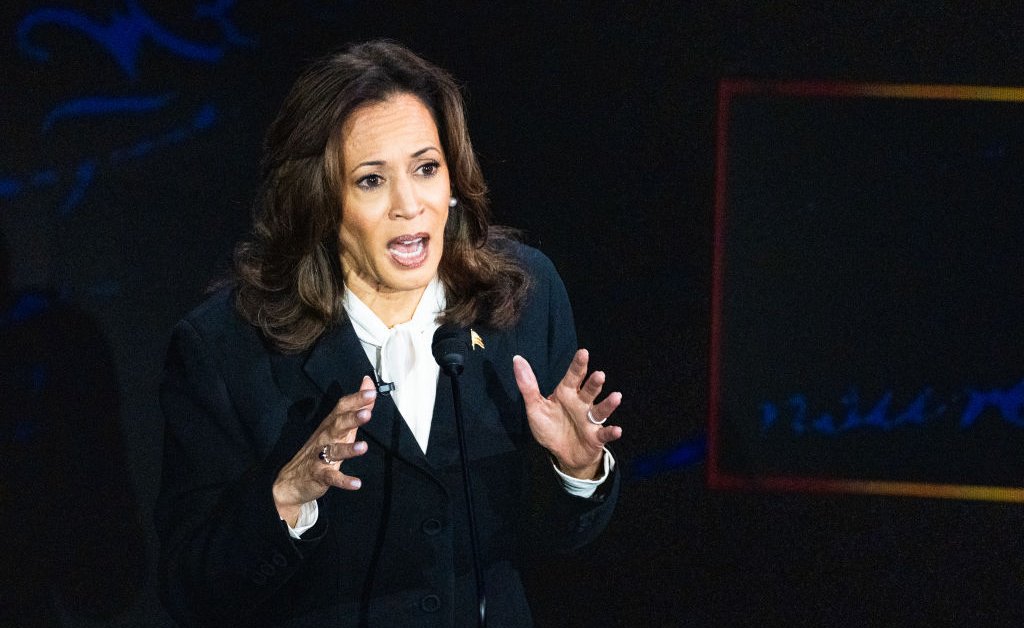When Bridgette Blount’s first grandchild was born in 2020, she knew it was time to transition from renting to homeownership. Her rent had been going up for years, and she wanted to ensure that her grandchild could come stay with her, play in her yard, and develop the kind of close relationship with her that she had once cherished with her own grandmother.
It was thanks to a down payment assistance program that Blount was able to find a townhouse she loved in Blaine, Minnesota, within her price range, and move in June of this year.
Now, she says her monthly mortgage payments are less expensive than her rent was.
Blount, 57, utilized the Twin Cities Habitat for Humanity’s homeownership program, as well as the Advancing Black Homeownership Program, designed specifically for Black Americans, in order to help her close on her home.
“Down payment assistance not only helped me be able to buy in desirable areas, it helped me be able to afford a home in the communities that I would feel comfortable in as a single Black woman,” Blount tells TIME. “So what that buying power afforded me was the ability to find a home within my median income, but still in an area where the quality of homes around me is increasing instead of decreasing.”
The typical down payment for first-time homebuyers was 8% in 2023, the highest since 1997, according to the National Association of Realtor. That can be an obstacle for many would-be homeowners, but down payment assistance programs can help, and the Twin Cities Habitat for Humanity’s program is just one of many that exists.
The obstacle of a down payment is particularly difficult for first-generation homebuyers, who, according to research from the Urban Institute, face far more challenges pulling together down payments than those who benefit from intergenerational wealth.
Ahead of the 2024 election, Vice President and Democratic nominee Kamala Harris has placed the housing crisis—with an emphasis on down payment assistance programs—on the federal map. During Harris’ and former President Donald Trump’s debate, the first policy to come up was housing affordability.
In one of Harris’ central and most publicized policy points, she states she will provide $25,000 in down payment assistance for first-time homebuyers if elected.
Blount was elated to hear of Harris’ plan. “If I’m one individual who went through this program and it changed my life in the way it did, I would be so happy and so astounded, if others could benefit from the same thing,” she says. “It could change the life of thousands of people if they knew more about the program and knew that it was attainable and within their reach.”
Read More: Here’s What Harris and Trump Have Proposed to Help the Housing Crisis
The National Association of Realtors website reiterates that a first-time home buyer is not just someone who has never owned a home, but can also refer to someone who has not owned a home in three years, or someone who once owned a home with a spouse, but now is buying on their own.
According to Shaun Donovan, former HUD secretary under former President Barack Obama, though down payment assistance alone cannot fix the housing crisis, it is “critical.”
“There is no question that if we want to build racial equity, close the wealth gap—a whole range of stuff in the housing crisis—that this is a critical piece of doing that,” Donavan says.
However, Drew Coleman, founder of Opt Real Estate in Portland, Oregon, has his doubts about the program. Affordability is certainly the biggest obstacle for the aspiring homeowners he works with, but down payment is just one component of this—and he sees monthly payments as the bigger obstacle.
“The $25,000 assistance plan may provide short term relief for a few buyers, but it also could compound the affordability crisis,” Coleman says. “My fear is it could potentially make first time homes $25,000 more expensive right off of the bat.”
He also emphasized the housing shortage in the United States, something Donavan also emphasized as an important aspect to the housing crisis. The National Low Income Housing Coalition estimated in a March 2024 report that the U.S. is short 7 million affordable units for the lowest income Americans, emphasizing not just a lack in housing in general, but a lack of affordable housing.
Meanwhile, Donovan is pleased that the Harris campaign is focusing on other issues beyond down payment, such as the supply side. One such plan includes the construction of three million new housing units by the end of her first term.
“Vice President Harris will work in partnership with industry to build the housing we need, both to rent and to buy, and to take down barriers that stand in the way of building new housing, including at the state and local levels. This will make rents and mortgages cheaper,” the Harris campaign wrote in a press release on Aug. 16.
Many on the right are also focusing heavily on the supply side of housing. In a speech in September to the Economic Club of New York, Trump promised to reduce regulations and open swaths of federal land for large-scale housing construction. “Regulation costs 30% of a new home, and we will open up portions of federal land for large-scale housing construction,” he said.
Habitat for Humanity’s Chief Program Officer Shereese Turner also emphasized that down payment assistance alone is not enough to ensure Habitat, and others organizing similar programs, are not “contributing to another housing crisis” by placing homebuyers in homes that they cannot “sustain.” Turner says Habitat for Humanity’s program focuses more heavily on “low to moderate or moderate to middle income” homebuyers who are seeking to become a homebuyer, but the burden of rent prevents them from saving money for fees like down payment and closing costs.
Turner highlights that Habitat’s program in particular also ensures that new homeowners will not spend more than 30% of their income on their mortgage payment. A critical part of down payment assistance, Turner says, is not just “home creation” but “stabilization and preservation,” particularly for communities of color.
Turner herself utilized down payment assistance programs when she was buying her first home, an opportunity she says her parents were never able to afford.
With a federal program, Turner says that homebuyers can stack their opportunities and resources, and potentially have even more opportunities to buy. Yet, she wants to ensure that any government programs are “transparent” and include the stabilization and post-buying support that Habitat prioritizes.
“We just need to make sure that we’re layering this down payment assistance that is really going to benefit the homebuyer and not just benefit the person who’s administering it,” she said. “But, the more that we are creating homeownership opportunities, the more we have to talk about how these homebuyers can be successful in homeownership too.”



1 comment
I don’t think the title of your article matches the content lol. Just kidding, mainly because I had some doubts after reading the article.